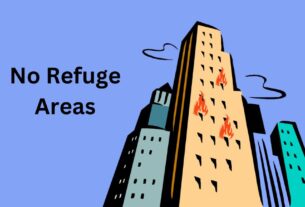BMRCL’s actions towards compensatory plantation of metro corridors is largely responsible for such decrease
By Ayanti Bera
Bengaluru, Nov. 23, 2018.
According to a report published in the Journal of Environmental Management by scientists from Indian Institute of Technology, Kharagpur and the Indian Institute of Science (IISc) in Bangalore, the green cover of the city has fallen from 68.2 percent in 1973 to 6.46 percent in 2017. That is a decrease of about 62 percent over a period of 44 years.
“Trees of Bangalore”, a study by Energy & Wetlands Research Group, Centre for Ecological Sciences, IISc, states that in a city like Bangalore there have to be 35 to 55 trees per person to mitigate respiratory carbon-die-oxide alone. But a ward-wise analysis of the city, included in the report, shows that in all the 194 wards, the majority have less than one tree per person, with hardly a few places with one to two trees person.
One of the main reasons for the alarming decrease in the green cover can be related to the Bangalore Metro Rail Corporation Limited’s (BMRCL) attitude towards afforestation of the metro corridors. According to B. L. Yashavanth Chavan, Public Relation officer, BMRCL, 1,653 trees were cut during the construction of Namma Metro Phase I.
Later on, in accordance with the Karnataka Preservation of Trees Act of1976, which obligates any authority to plant ten trees for every one tree they cut, around 15,000 trees were planted by BMRCL in association with (Bangalore Development Authority) BDA, (Bhruhat Bengaluru Mahanagar Palike) BBMP and Forest Department.
Out of that total, 5000 were planted by BDA, 3000 were planted by the BBMP, and 7000 were planted by the Forest Department.
The Karnataka Preservation of Trees Act also mandates any authority to hold a public consultation session if the number of trees to be cut is 50 or more. Through a series of RTI filed in April this year, by Dattatraya T. Devare, Trustee, Bangalore Environment Trust (BET), it has come to light that 213 trees were approved to be cut for the Metro line from RV Road to Bommasandra without any care for public consultation.
Approval from BBMP for felling the trees was obtained on a piecemeal basis. The permission letters that BMRCL submitted to the Forest Cell of BBMP shows that the total number of trees was divided into smaller portions that were less than 50 in number to avoid the mandate of the act. BMRCL filed several applications with numbers of trees ranging from five to 45, and one for 68.
Devare adds that BMRCL’s claim of planting 15,000 trees after the Metro Phase 1 is difficult to verify as the trees are planted really far from each other and there are not enough volunteers to do the groundwork.
Recently, Devare wrote a letter to the Managing Director of BMRCL, talking about the organization’s piecemeal arrangement with BBMP and requesting for urgent public consultation for the 400 trees that are likely to be cut for Metro line from Silk Board to K R Puram.
He also requested BMRCL to “consider suitable route re-alignment to minimize loss of tree cover”, “consider tree plantation as a default option” and make compensatory plantation a must along with the metro route. However, he has failed to receive any reply till date from the Managing Director or the organization itself.
Cities are supposed to have a minimum green cover of 33 percent for a healthy environment and to keep the pollution in check. BMRCL’s lack of responsibility towards the hundreds of trees they are cutting to urbanize the city is increasing the already worse state of the trees of Bengaluru.



It’s actually a great and useful piece of info.
I’m glad that you simply shared this helpful info with us.
Please keep us informed like this. Thank you for sharing.